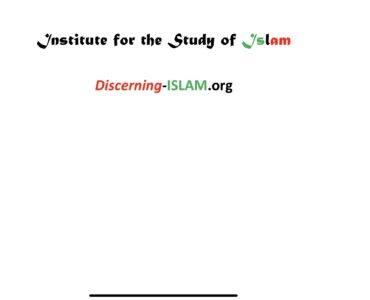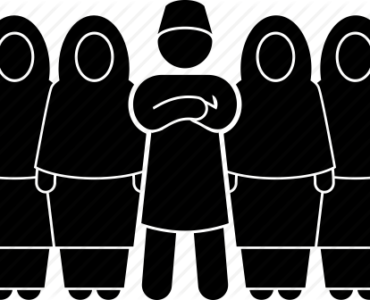
The East African Coast
Islam came to East Africa primarily from Yemen and the Hadramawt on the south coast of Arabia. Muslim sailors crossed the Indian Ocean in special lateen-rigged ships called dhows, similar to the ones still seen in the harbor of Lamu on the Kenyan coast
The story of Islam on the East African coast is told by a mosque at Shanga in the Lamu archipelago (off the eastern coast of Kenya). Its original construction is dated between 780 and 850, and it survived until the early fifteen century. The continual reconstruction of this mosque was aimed at accommodating a constantly growing Muslim community. The accelerated expansion of Islam on Africa’s east coast occurred in the thirteenth century, as suggested by the remains of medieval towns in excavations at Kilwa (in southeastern Tanzania) and elsewhere. By the fourteenth century there were more than thirty Muslim communities with mosques along the coast and in the Comoro Islands and in Madagascar. From Arabia the Shafii school of law spread to East Africa and elsewhere along the shores of the Indian Ocean.
The reconstruction of the history of Islam on the East African coast, according to the archaeological evidence, is confirmed by the Arabic sources. In the tenth century the Arab historian and traveler al-Masudi recorded the presence of Muslims in the land of the Zanj, as the East African coast was known to the Arabs. Muslims gradually became the majority in settlements that enjoyed the prosperity of an ever-growing trade. Islamic influences came to East Africa from several directions, but the most important influence was from Yemen and the Hadramawt (a region in the southern Arabian peninsula), from where shurafa families reached the East African coast, particularly since the thirteenth century. One of these families provided the Abul-Mawahib dynasty of Kilwa. Ibn Battutah visited Kilwa in 1331, where the ruler’s court was frequented by holy men and shurafa. Ibn Battutah reported about the experts on Islamic jurisprudence also in Mogadishu.
Conversion in the early centuries proceeded slowly and unevenly, but by the time the first Europeans arrived Islam had already achieved majority status in dozens of coastal towns. In the seventeenth century Pate (in Kenya) became an important entrepôt of the slave trade. The Muslim traders of Pate had connections with Arabia, with India, and even with Java. Knowledge of spoken and written Arabic was restricted to first-generation migrants from the Arabian peninsula and to those few who studied abroad. Swahili became a written language only in the eighteenth century, and the Swahili-speaking Muslims were therefore practically illiterate. The limited interaction of Arabic and Swahili explains why there was no significant borrowing of Arabic words into the Swahili language before the seventeenth century. The Hadrami immigrants contributed to the development of a written coastal literature. They began by writing works in their native Arabic, but as they became integrated into the local Swahili-speaking society, coastal scholars of Hadrami background began writing in Swahili. Consequently, the earliest written poetry from the coast dates from the middle of the seventeenth century.
The Lamu archipelago became the religious and cultural heartland of the coast between 1550 and 1800. From Pate shurafa families moved further south, bringing with them their spiritual charisma and scholarly traditions. The Swahili dialect of the Pate-Lamu region had a large preponderance on the southern coastal dialects at that time, thus indicating a southward migration of a large and prestigious group of northern immigrants from the Pate region. The shurafa, scholars and holy men of Pate, known for their learning and piety, might have contributed to infusing a certain militancy to East African Islam. They fueled Islamic resistance to the Portuguese, which spread from Pate to other parts of the East African coast. The final expulsion of the Portuguese from the coast north of Mozambique in 1728 opened a new era in the history of Islam in East Africa. This new period is connected with the arrival of the Omanis in the eighteenth century and the establishment of the Zanzibar sultanate in the 1820s. One aspect of the change was the institutionalization of the administration of the shariah through appointed qadis, whereas before the relocation of the sultanate from Oman to Zanzibar, the administration of the shariah had been informal and irregular in most coastal centers. Local scholars served in advisory capacities to local rulers, who reserved for themselves the actual rights of adjudication.
Many Muslims came to East Africa from India in the nineteenth and twentieth centuries, when both regions were part of the British Empire. Muslims comprise only a small portion of the population of modern-day Kenya, but they play an important role in life there. The main mosque in Nairobi is modeled on Indian prototypes.
Muslims arrived to the Cape colony in South Africa as early as 1652. They were political exiles from Indonesia, whom the Dutch defeated in their homelands. Muslims were therefore referred to in the Cape as “Malays.” The Dutch also brought convicts from all over the Indian Ocean to work in gangs on the fortification and harbor of Cape Town. The convict population remained a source of Muslims, provided the early ulama, and became leaders of an alternative Cape community. There were many Muslims among the sixty-three thousand slaves who came ashore in South Africa between 1652 and 1807 from the Indian Ocean. By the 1790s free Muslims were numerous enough to form a small but self-assured mercantile community in Cape Town. Some of them made the pilgrimage to Mecca by way of Mauritius.
The East African Coast
803 – 030
Home
Last Updated: 04/2022
See COPYRIGHT information below.



